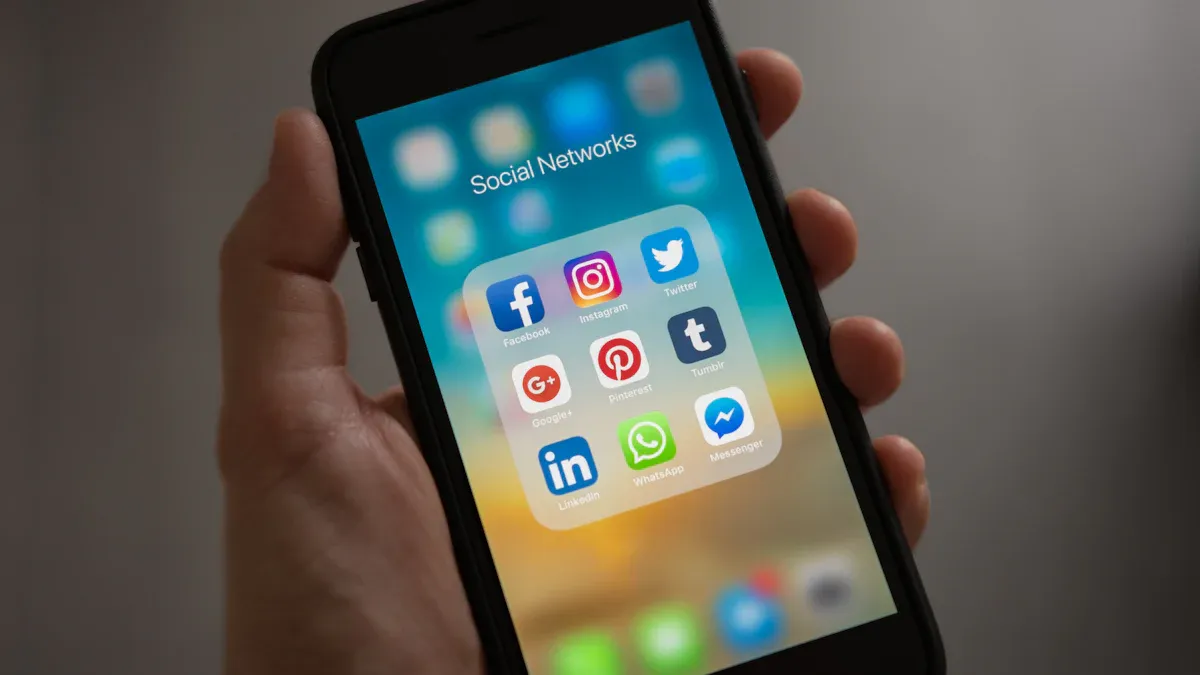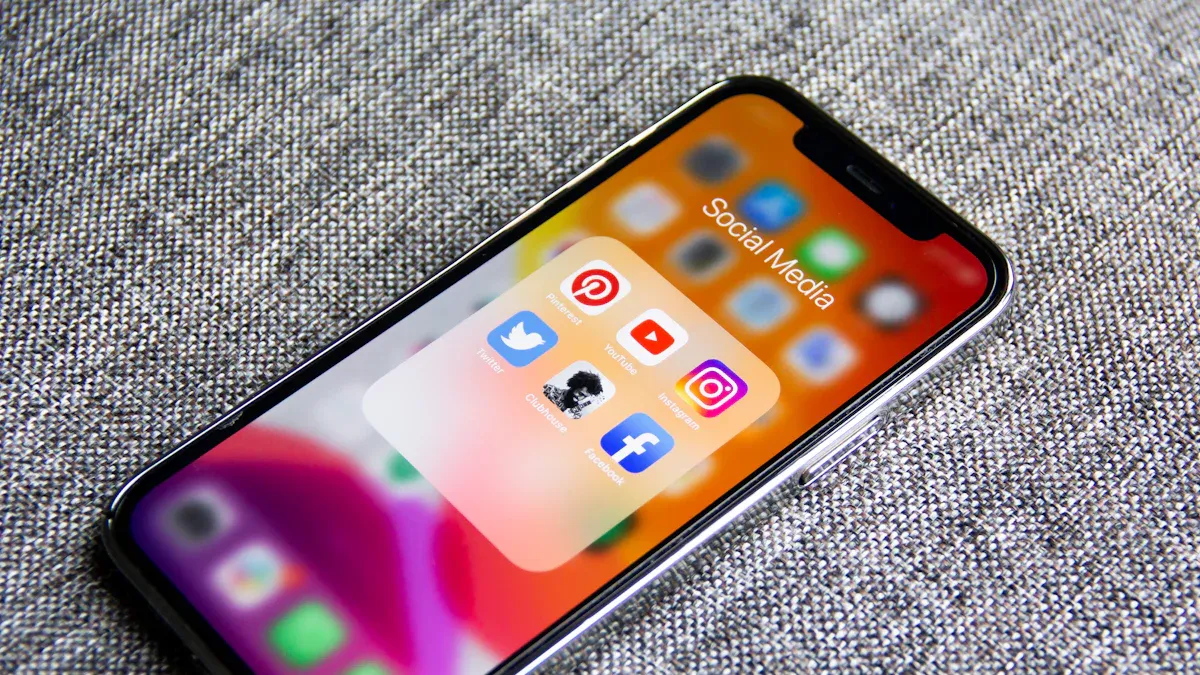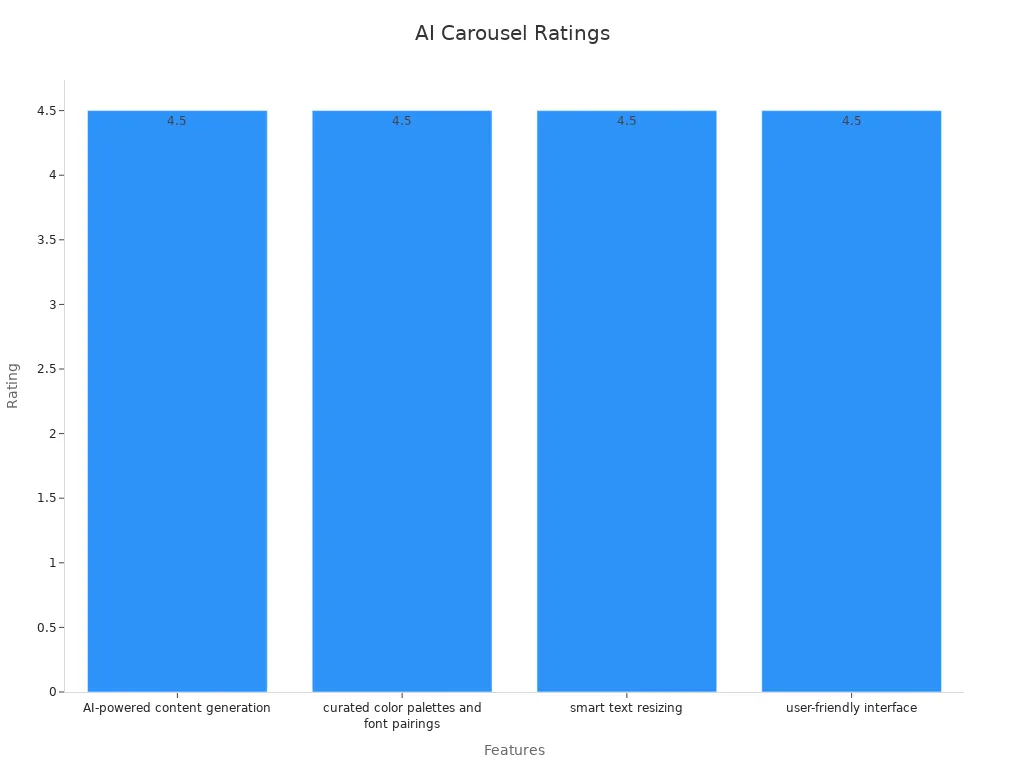Creating Viral LinkedIn Carousels with AI Assistance

Creating Viral LinkedIn Carousels with AI feels simple and fast. You do not need to be a designer to get professional results. With just a topic and a few clicks, you can turn your ideas into eye-catching slides. Carousels on LinkedIn get 1.6 times more engagement than regular posts. AI tools help you save time and post more often, which keeps your audience coming back. You can easily add your style and clear calls-to-action to boost your results.
Key Takeaways
LinkedIn carousels get more likes than normal posts. They keep people interested with easy slides and catchy starts.
AI tools help you make carousels fast, even if you can't design. This saves time and lets you make more content.
Use clear branding and simple pictures to help your carousels stand out. Make sure your designs work well on phones. This helps people trust you.
Check how your carousels do by using analytics. This helps you see what works and get better next time.
Do not put too much text on each slide. Always add calls-to-action to get people to join in and follow you.
Why Carousels Go Viral

Engagement Drivers
Carousels get lots of attention on LinkedIn. They are easy for people to use. Swiping through slides makes people stay longer on your post. This tells LinkedIn your post is important. Carousels also make people want to save and share them. This helps your message reach more people.
Here are some main things that help carousels get more likes:
Pick a few colors and fonts. Use only 1–3 of each for a neat look.
Make slides for phones. Vertical slides (1080 x 1350 px) reach more people.
Add pictures like icons, charts, and infographics. These catch the eye better than lots of words.
Begin with a strong hook. The first slide should make people curious.
Put a rehook slide in the middle to keep people interested.
Use lists, not long paragraphs. This makes your slides easy to read.
Show key points with bold text or special marks.
Mix pictures with tips people can use. Vertical carousels get 1.6 times more likes than single images.
Carousels get 3X more likes and 5X more comments than text posts. Profiles with carousels grow two times faster. Telling stories with pictures and longer viewing time helps your posts get seen by more people.
Viral Factors
Some things make carousels go viral. The way you set up your slides matters a lot. Viral carousels make people want to swipe, save, and share. If you post random tips with no plan, fewer people will see it. Posting with a goal, like getting leads, works better than just wanting likes.
Metric Name | What It Measures | Why It Matters |
|---|---|---|
How many people see all slides | Shows if your story keeps attention | |
Engagement Rate | Likes, comments, saves, shares | Shows if people care about your post |
Saves | How often people save your post | Means your post is helpful |
Share Rate | How often people share your carousel | Helps more people see your post |
Carousels are great for tutorials, how-tos, myth-busting, quotes, frameworks, and mini case studies. They help you build trust and show you know your stuff. People like to swipe through and learn new things. When your post gets more likes and shares, more people see it. People want to join in and share good info with friends. Happy feelings in your slides also make people want to share.
Tip: Finish your carousel with a clear call-to-action. This helps turn viewers into followers or leads.
Creating Viral LinkedIn Carousels

AI Tools Overview
You do not need special design skills to make viral LinkedIn carousels. Today, smart AI tools can do most of the hard work for you. These tools help you turn your ideas into cool slides in just a few minutes.
Here are some popular AI carousel tools and what makes them special:
Tool | Numerical Rating | Most Effective Features |
|---|---|---|
4.5 / 5 stars | AI carousel generation, customization options, cost-effectiveness | |
4.5 / 5 stars | AI-powered content generation, curated color palettes and font pairings, smart text resizing, user-friendly interface |
You can also try Taplio, ContentDrips, PostNitro, and Blabigo. These tools let you:
Make carousel content from a simple idea or prompt.
Choose from templates with bright colors and easy fonts.
Add your own brand, like logos and custom colors.
Save your finished slides as a PDF for LinkedIn.

More than 30,000 brands use AI carousel tools now. You will see small businesses, big companies, and even schools using them. Most marketers say these tools save time, help them make more content, and lower costs by doing design work for them.
Tip: Many tools work with Canva or other design apps. You can start with AI, then change your slides in Canva to make them your own.
Workflow Steps
Let’s look at the steps for making viral LinkedIn carousels with AI. You will see how quick and easy it is.
Input Your Topic
Start by typing your main idea or topic into the AI tool. You can use a headline, a question, or even a case study.Generate Content
The AI will turn your topic into a draft carousel. It breaks your message into short slides. Each slide shows a key point, so your story is easy to follow.Customize Design
Pick a template that matches your brand. Change colors, fonts, and images. Add icons, charts, or infographics to make your slides stand out.Add Branding
Put in your logo, use your brand colors, and add your social handles. This helps people remember you and builds trust.Preview and Edit
Check your slides on both desktop and mobile. Make sure the text is clear and the pictures look good.Export as PDF
Save your finished carousel as a PDF. Most AI tools let you do this with one click.Upload to LinkedIn
Go to LinkedIn, start a new post, and upload your PDF. Add a catchy caption and a call-to-action.
Note: Some creators use a workflow with Canva and other AI tools. For example, you can export your design from Canva, get the text with an AI like Claude, and then format it for LinkedIn with EasyGen. This can turn a 12-hour job into a 20-minute task.
Here’s a quick look at how AI makes the process faster:
Step / Phase | Measurable Performance Improvements |
|---|---|
Week 1: Foundation Building | Benchmark engagement rates; document content creation time |
Week 2: Format Multiplication | Cross-platform adaptation increases content reach and engagement |
Week 3: Optimization & Scaling | Automation reduces content creation time drastically; output increases 300-500% |
Week 4: System Mastery | A/B testing and schedule optimization improve engagement further |
Overall 30-Day Results | 5x content output increase; 105% engagement improvement; 62.5% cost reduction |
You can see real results from using this method. One FinTech company lowered their branded search costs by 48% with AI tools. Another startup raised their conversion rates by 31% with AI-automated LinkedIn carousels. Most marketers say AI gives them more time for planning and helps them post more often.
Making viral LinkedIn carousels is not just about speed. AI helps you try different styles, see what works, and keep getting better. You can A/B test your slides, change your tone, and even let the AI learn your style for next time.
Here’s how AI tools help you get better results:
They split long stories into easy slides.
Each slide can show proof, like client quotes or before-and-after pictures.
AI tools use data to pick the best slide order and layout.
You can test different versions to see what your audience likes best.
Slide-level analytics show which tips or pictures get the most attention.
Metric | Benchmark / Improvement |
|---|---|
Carousel ad engagement | |
Cost-per-lead (CPL) reduction | 15–25% reduction using AI predictive targeting |
Conversion rate improvement | 15–22% increase with AI personalization |
The market for AI content creation is growing very fast. Experts think it will go from $3.28 billion in 2024 to over $22 billion by 2029. Almost every business will use AI for content by 2025. This means more people will use AI for making viral LinkedIn carousels, so now is a great time to start.
Try changing your themes and adding your own branding. Use AI for both the words and the pictures. This way, your carousels will always stand out and match your style.
Best Practices
Hooks and CTAs
You want your first slide to grab attention right away. Use a short, bold hook—think of a question or a number that makes people curious. For example, “5 Ways to Double Your Leads” works better than a long sentence. Place clear calls-to-action (CTAs) throughout your carousel, not just at the end. Try simple yes/no questions or ask readers to comment. These low-friction CTAs can triple your comments and boost your reach. Early engagement in the first hour helps your post get seen by more people.
Tip: Use a strong hook on the cover slide and a clear CTA on the last slide to guide your audience.
Visuals and Branding
Keep your slides clean and easy to read. Limit each slide to 25-50 words and use big, bold fonts. Stick to your brand’s colors and style so people recognize your content. Add your logo and use the same fonts every time. Tell a story with your slides—take your audience on a journey, not just a list of facts. Use arrows or graphics to guide readers to swipe. Here’s a quick table to help you align your content with your brand:
Best Practice Standard | Description | Outcome |
|---|---|---|
Match your brand’s style and values | Higher engagement | |
Blend AI with Human Creativity | Use AI for ideas, but add your own touch | Builds trust |
Mobile Optimization | Make sure slides look good on phones | More user interaction |
Mobile Optimization
Most people use LinkedIn on their phones. Make sure your text is big enough to read on small screens. Use high-quality images that stay clear on mobile. Leave space around the edges so nothing gets cut off. Test your carousel on your phone before posting. Simple, bold fonts work best. Avoid clutter—give your content room to breathe.
Analytics
Track how your carousels perform. Look at metrics like engagement rate, impressions, and click-through rate. AI tools can show you which slides get the most attention and help you spot trends. Real-time dashboards make it easy to see what works. Try A/B testing different hooks or CTAs to see what your audience likes best. Use these insights to improve your next carousel.
Always review AI-generated content to keep your brand’s voice and stay authentic.
Mistakes to Avoid
Overloading Slides
You might think more information means more value, but too much text on your slides can scare people away. When you cram slides with details, readers feel overwhelmed and stop swiping. Keep each slide simple and clear. Use bullet points to break up ideas. Make sure every slide builds on the last one, so your story flows and keeps people curious.
Bullet points help people scan quickly.
Each slide should add something new, not repeat or overload.
Good images and short stories keep people interested.
Tip: Less is more. Clean slides with space and visuals get more engagement.
Ignoring Branding
If you skip branding, your carousels blend in with everyone else’s. People might not remember you or your message. Consistent colors, fonts, and logos help you stand out. When you ignore branding, you lose chances to build trust and attract new followers. A weak or confusing brand can even turn away clients or employers.
Inconsistent style confuses your audience.
You miss out on networking and job opportunities.
Weak branding lowers your authority in your field.
Negative or off-brand posts can hurt your reputation.
Stay positive and true to your brand. Make every carousel feel like it’s yours.
Skipping Analytics
You can’t improve what you don’t measure. If you skip analytics, you miss out on learning what works. Important numbers like click-through rate, saves, and shares show if your carousels hit the mark. Sometimes, analytics tools miss key data, like shares or clicks, which can make your results look better or worse than they are. Without tracking, you might keep making the same mistakes.
Follower growth tells you if your content connects.
Comments from the right people matter more than just lots of comments.
Saves and shares mean your content is valuable.
Missing data can trick you into thinking your post did better or worse than it really did.
Always check your numbers. Use what you learn to make your next carousel even better.
You can boost your LinkedIn results by Creating Viral LinkedIn Carousels with AI. These tools save you time, spark creativity, and help you get more likes and shares. Just look at the numbers:
Benefit | Result |
|---|---|
Engagement | |
Time Saved | 85% faster than manual design |
Follower Growth | Up to 30% more followers for some brands |
Try out these steps and see what works for you. Share your carousels and watch your audience grow. Now is the perfect time to start experimenting!
FAQ
How do I pick the best AI tool for LinkedIn carousels?
Think about what you need most. Some tools focus on design, while others help with writing. Try free versions first. Pick the one that feels easy and matches your style.
Can I use AI carousels if I have no design skills?
Absolutely! AI tools do the heavy lifting. You just add your ideas and pick a template. The tool handles the rest. You can make great slides without any design background.
Will LinkedIn know if I use AI to make my carousels?
No, LinkedIn does not flag AI-made carousels. Your content looks just like any other post. Just make sure your ideas are original and helpful.
What should I do if my carousel does not get much engagement?
Try changing your hook or adding a new call-to-action. Look at your analytics to see which slides work best. Test different topics and styles until you find what your audience likes.
Can I edit AI-generated carousels in Canva?
Yes! Most AI tools let you export your slides. You can upload them to Canva and tweak colors, fonts, or images. This helps you add a personal touch.
See Also
Transform Hiring Efficiency Using An AI Job Description Tool
Create Engaging LinkedIn Headlines To Showcase Your Humor
Best Five AI Video Generators In 2023 Compared And Reviewed

